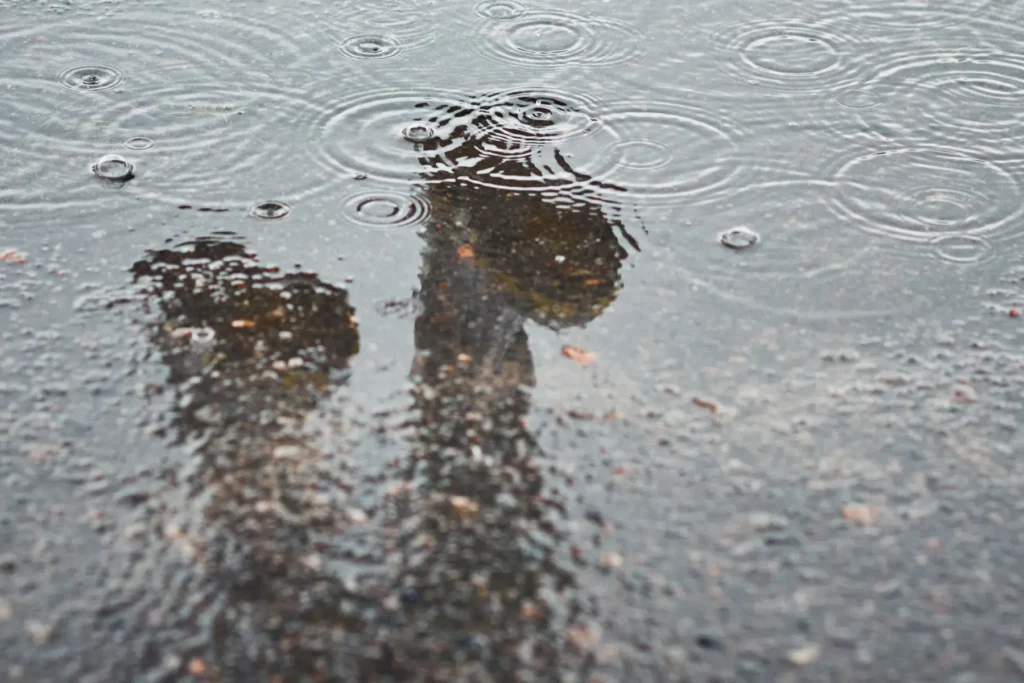Lawn seed needs enough moisture to grow well. Otherwise, the green carpet will remain a pipe dream. But what if it rains heavily when sowing? Read here whether you should sow lawn when it rains a lot.
- Lawn seed needs moisture, light and heat
- it is better to wait with sowing when heavy rain is announced
- waterlogging promotes pest infestation and diseases
- simple measures prevent damage
Contents
- 1 Sowing lawn in the rain
- 2 Measures before the rain
- 3 Measures after the rain
- 4 Frequently asked questions
- 5 How to protect already grown lawn from damage caused by heavy rain?
- 6 When is the best time to sow lawn?
- 7 How should the area be prepared for the establishment of a lawn?
- 8 How to measure the moisture of the lawn?
- 9 Author
Sowing lawn in the rain
A beautiful green lawn is not witchcraft. If you pay attention to the needs of the plants and choose the sowing date wisely, a green carpet will soon spread in your garden. If it is dry and light rainfall is forecast for the coming days, the perfect time for sowing has come.
However, if heavy rain is predicted for the advised date, you should refrain from seeding lawn for the following reasons:
- Lawn seed will be washed away
- unsightly holes in the lawn are imminent
- small plants cannot withstand the pressure of rainwater
- mud formation due to heavy rain
There is also a risk of waterlogging developing in the lawn. The consequences:
- Danger of rotting
- Plants thrive worse
- increased susceptibility to pests and diseases
- only reduced nutrient uptake possible
- death of young lawn plants is imminent
Note: A yellowing of the plants is a clear sign of a nitrogen deficiency.
Measures before the rain
Protect seed with fleece
If rain is forecast after seeding, place a plant fleece over the area to protect the seed. This will prevent the light grass seed from being washed away. Alternatively, you can use a waterproof tarp.
Draw trenches
Draw trenches around your freshly seeded lawn. This will make it easier for water to drain away.
Measures after the rain
Aerify

Poke small holes in the lawn after rain. Pricking loosens the soil and promotes the infiltration of rainwater. You can use a very simple digging fork for this purpose.
Spread fine sand
Spread fine sand to speed up the drying of the area plagued by waterlogging.
Caution: Do not walk on the lawn under any circumstances after heavy rainfall. Your body weight would further compact the soil, making aeration more difficult and reducing water absorption when it rains.
Frequently asked questions
How to protect already grown lawn from damage caused by heavy rain?
Ensure good aeration of the lawn. Regular dethatching is worthwhile. It prevents matting and facilitates water seepage during heavy rains.
When is the best time to sow lawn?
The conditions for growing the lawn seed are best in the spring between the end of April and the beginning of May. Before that it is often still too cold. Lawn seeds need light and warmth. Pay attention to the night temperatures. The soil should be 10 degrees warm. Alternatively, you can sow lawn at the beginning of autumn.
How should the area be prepared for the establishment of a lawn?
Clear the designated area of weeds, roots and stones and dig it up. After that, the soil needs about two weeks of rest. Rake and roll the area. Check the soil quality. Acidic soil can be optimized with an application of lime. Fertilize the soil with compost before sowing.
How to measure the moisture of the lawn?
A simple way is to poke out a clod of turf with a spade. This way you can see if the soil is still deeply moist. If so, you should wait to reseed to repair holes in the lawn. After testing, put the clod back in place. It will grow back quickly. Alternatively, you can use a moisture meter.


